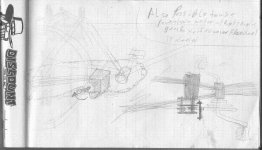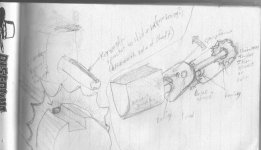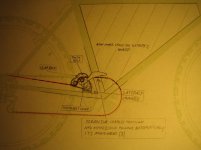I've been pondering this idea for a while, but never did more than sketch it up. I was looking for them earlier today, to post them up for [Team1]'s thread about the drive they're working on, but I can't find them. I'll probably resketch them at lunch today and scan them in here then. Until I do, you'll have to get the idea from the text instead. 
It's kinda like a cyclone or stokemonkey setup, but drives in a different place.
I haven't seen this done yet, probably for good reasons, but:
How about driving the bottom of the chainline coming out of the cranks, so that it pulls the chain along? The drive sprocket on the motor shaft would slide along it's shaft to stay aligned with the chain as you shift gears front and back. The motor itself could be mounted to the kickstand plate area on many bikes.
A disadvantage of this idea is that it could require adding some links to some (many?) bike chains, depending on how the chain would have to wrap around the sprocket to provide drive force.
Also would still need a freewheeling crank, if you don't wanna pedal along with the motor.
It's main advantage is that it allows all the chainrings to stay on the front and be usable for the pedalling, as none are taken up by the motor chain. (assuming you don't have to change them all out because of the freewheeling cranks).
I'm not sure yet if that advantage is enough to make all the other complications worth it, but if you only had a low-power motor, and needed to be able to pedal to help up steep hills or with lots of cargo, then it would definitely be useful.
It's kinda like a cyclone or stokemonkey setup, but drives in a different place.
I haven't seen this done yet, probably for good reasons, but:
How about driving the bottom of the chainline coming out of the cranks, so that it pulls the chain along? The drive sprocket on the motor shaft would slide along it's shaft to stay aligned with the chain as you shift gears front and back. The motor itself could be mounted to the kickstand plate area on many bikes.
A disadvantage of this idea is that it could require adding some links to some (many?) bike chains, depending on how the chain would have to wrap around the sprocket to provide drive force.
Also would still need a freewheeling crank, if you don't wanna pedal along with the motor.
It's main advantage is that it allows all the chainrings to stay on the front and be usable for the pedalling, as none are taken up by the motor chain. (assuming you don't have to change them all out because of the freewheeling cranks).
I'm not sure yet if that advantage is enough to make all the other complications worth it, but if you only had a low-power motor, and needed to be able to pedal to help up steep hills or with lots of cargo, then it would definitely be useful.







